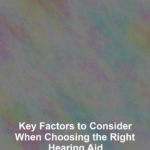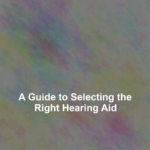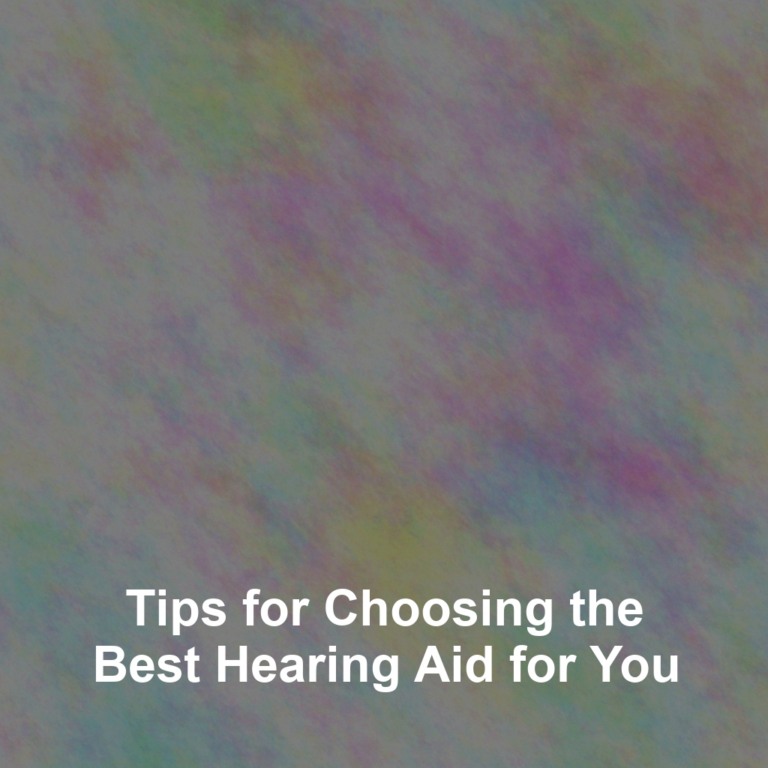Have you ever wondered what makes a particular hearing aid the right choice for you? ItG??s a decision thatG??s as personal as it is technical.
When youG??re faced with the task of selecting a hearing aid, youG??ll need to consider various essential factors that align with your lifestyle, hearing needs, and preferences. You must navigate through the myriad of options, from understanding the different types of hearing aids to evaluating the nuances of sound quality features.
Battery life is another crucial element, as it dictates how often youG??ll be tethered to a charger. Additionally, with the rise of smart technology, connectivity features may play a significant role in your day-to-day convenience.
And letG??s not forget, a comfortable fit is paramount; after all, youG??ll be wearing this device for the majority of your waking hours.
As you weigh these factors, youG??ll find that the right hearing aid can dramatically enhance your quality of life. Stay tuned as we explore each of these elements to unveil how they collectively contribute to finding a hearing aid that feels like it was made just for you.
Understanding Hearing Aid Types
When choosing a hearing aid, itG??s essential to familiarize yourself with the various types available to find the best match for your needs. YouG??ll find that hearing aids come in a range of styles, each with its own set of advantages.
Behind-the-ear (BTE) models sit comfortably behind your ear and amplify sound through a small tube that directs it into your ear canal. TheyG??re robust and easy to handle, which makes them a great choice if youG??re looking for something durable and user-friendly.
In-the-ear (ITE) hearing aids are custom-fitted to rest in the outer ear bowl. YouG??ll appreciate their discretion and how they can incorporate additional features, like volume controls, without being too conspicuous.
Completely-in-canal (CIC) and invisible-in-canal (IIC) options are the most discreet. They fit deeper within the ear canal and are barely noticeable, offering a high level of aesthetic appeal.
DonG??t forget about receiver-in-canal (RIC) aids, which are similar to BTEs but have a tiny wire instead of a tube, connecting the piece behind your ear to the receiver in your ear canal. They offer a comfortable fit and are less visible than BTEs.
ItG??s worth noting that each type varies in size, visibility, battery life, and ability to amplify sound. Your lifestyle, degree of hearing loss, and personal preferences will determine which is right for you. Choose wisely, and youG??ll significantly enhance your hearing experience.
Evaluating Sound Quality Features
After considering the different hearing aid styles, itG??s crucial to assess the sound quality features that each offers to ensure you get the clearest listening experience. YouG??re looking for technology that allows you to hear crisp, natural sounds with minimal background noise. DonG??t overlook features like directional microphones, which focus on the sound in front of you and reduce noise from other directions. This can make a huge difference when youG??re in noisy environments.
Also, consider models with noise reduction capabilities. These work by identifying and minimizing certain types of background noise, making it easier for you to follow conversations. Some hearing aids even feature wind noise reduction, which is especially beneficial if you spend a lot of time outdoors.
Feedback suppression is another essential feature. It prevents that annoying whistling sound that can occur when the hearing aid picks up its own amplified sound.
Lastly, look for hearing aids with a good frequency response range. This ensures that you can hear a wide range of sounds, from the low tones of a bass guitar to the high pitch of a bird chirping. Remember, the goal is to find a hearing aid that offers you a sound quality thatG??s as close to natural hearing as possible.
Importance of Battery Life
Consider the battery life of a hearing aid as a critical factor, since it determines how long you can rely on your device without the inconvenience of frequent recharging or replacement. You donG??t want to be caught off guard with a dead battery during an important conversation or event. ThatG??s why you should look for hearing aids with a battery life that suits your lifestyle and daily needs.
Traditional hearing aids typically use disposable batteries that need replacing every few days to weeks, depending on usage. On the other hand, rechargeable hearing aids, which have gained popularity, can last a full day on a single charge. YouG??ll need to charge them overnight, similar to a smartphone, which can be more convenient than changing batteries.
When youG??re evaluating options, consider how battery life affects your routine. Are you often on the go, or do you have easy access to charging facilities? Also, longer battery life may mean fewer expenses and less environmental waste over time.
Considering Connectivity Technology
While ensuring your hearing aid has a long battery life is essential, donG??t overlook the benefits of advanced connectivity technology that can enhance your auditory experience. TodayG??s hearing aids arenG??t just about amplifying sound; theyG??re about seamless integration into your digital life.
Consider Bluetooth capabilities, which allow you to connect directly to smartphones, TVs, and other devices. YouG??ll be able to take calls, listen to music, or watch shows with the audio streamed right to your hearing aids. This can make life significantly easier, as you wonG??t need to juggle multiple headphones or audio devices.
Wireless connectivity can also enable you to control your hearing aids via a smartphone app. This gives you the power to adjust settings and preferences on the go, without fiddling with tiny buttons or dials. Furthermore, some apps can track your hearing aid usage and provide insights to help youG??or your audiologistG??fine-tune your hearing experience.
DonG??t forget to check for compatibility with assistive listening systems, often found in public venues. These systems can directly link to your hearing aid, ensuring you donG??t miss a word during a lecture, movie, or live performance.
In short, when youG??re choosing a hearing aid, make sure itG??s equipped with the latest connectivity technology to fully cater to your lifestyle needs.
Ensuring Comfortable Fit
Ensuring your hearing aid fits comfortably is as crucial as its technical features for all-day wear. YouG??ll be wearing it most of your waking hours, so comfort canG??t be an afterthought. Imagine a device thatG??s so snug you barely remember itG??s there. ThatG??s the ideal.
When youG??re getting fitted, remember that your earG??s shape is as unique as your fingerprint. A custom fit not only feels better but also improves the effectiveness of your hearing aid. DonG??t rush through the molding process; itG??s the blueprint for your comfort.
You should also consider the weight of the hearing aid. Heavier models might offer more features, but if theyG??re causing discomfort, youG??ll likely use them less. Strike a balance between functionality and ease of wear.
Look out for skin-friendly materials that minimize the risk of irritation, especially if youG??ve got sensitive skin. And donG??t forget to check for easy maintenance features. A hearing aid thatG??s simple to clean and care for will be more comfortable over time, as well-maintained devices are less likely to cause discomfort or infections.
Conclusion
YouG??ve learned about the different hearing aids, sound quality, battery life, connectivity, and comfort.
Remember, itG??s crucial to pick a device that not only fits well and feels good but also connects seamlessly with your life.
DonG??t skimp on sound quality or battery life G?? these impact your experience every day.
Consult with a professional, try different models, and find the perfect match for your ears and lifestyle.
Hear the difference the right choice makes.










